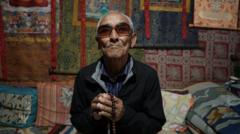In the serene hills of Dharamshala, around 70,000 Tibetans seek refuge but grapple with the pain of exile and the search for their identity. Since fleeing their homeland in 1959 after a failed uprising against Chinese rule, many Tibetans, like writer-activist Tenzin Tsundue, express feeling like perpetual outsiders even after decades in India.
While the Dalai Lama’s teachings inspire a sense of unity, there’s a lingering struggle as the community remains stateless, relying on renewable registration certificates that prevent them from fully participating in Indian society. Many feel conflicted about applying for Indian passports, as it means relinquishing a part of their Tibetan identity.
Storytelling by older refugees, such as Dawa Sangbo, highlights the hardship of their journey—a treacherous seven-day trek to seek safety. They may have found refuge, but sentiments of loss about their homeland remain strong. Younger generations are left wrestling with existential questions, feeling disconnected from their roots, culture, and language.
Despite gratitude towards India for hospitality, many acknowledge the challenges of not having full rights or recognition, limiting job opportunities and travel. The desire for freedom back in Tibet is palpable, yet there's a pragmatic acceptance of the difficult geopolitical realities.
With the upcoming transition of leadership, uncertainties loom over the Tibetan movement's future, leading many to reflexively seek citizenship in Western countries for a chance to reconnect with family left in Tibet. As the Tibetan community continues to adapt, their profound quest for identity and belonging remains at the center of their lives.

















